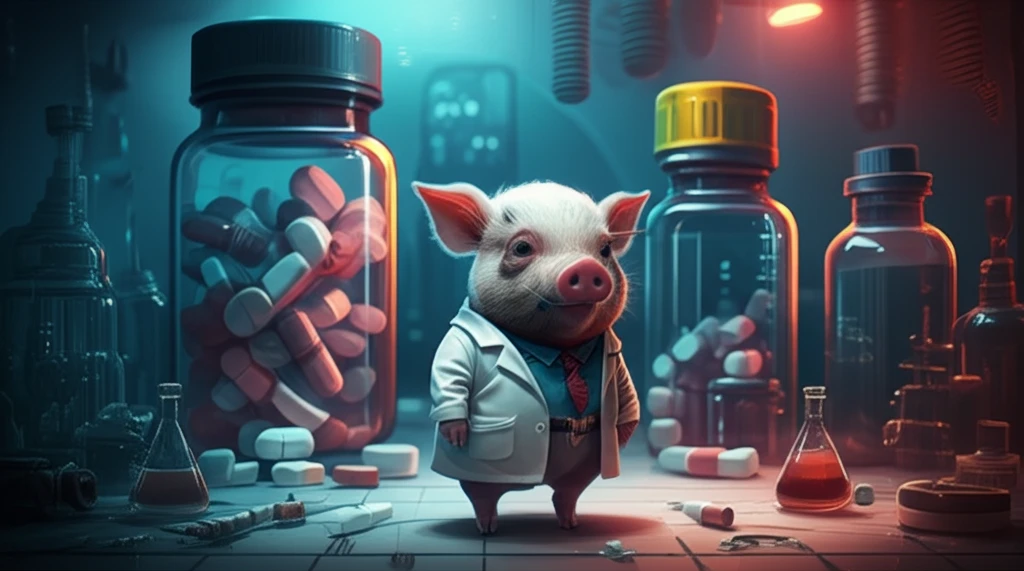
Minipigs: The Unlikely Heroes of Drug Safety Testing
"Could these pint-sized pigs revolutionize how we assess the safety of new pharmaceuticals?"
The world of drug development is a complex and crucial endeavor. Before any new medication hits pharmacy shelves, it must undergo rigorous safety testing to ensure it won't cause more harm than good. Traditionally, these tests have relied heavily on animal models, with rodents, dogs, and non-human primates being the most common subjects. However, there's a growing movement to find alternative models that are more ethical, cost-effective, and potentially more predictive of human responses. Enter the minipig.
Göttingen Minipigs, specifically, are gaining traction as a promising non-rodent species for safety assessment. While perhaps an unexpected choice, their physiological similarities to humans, manageable size, and ease of handling make them an attractive alternative to larger animals like dogs or primates. As social and legislative pressures mount against the use of non-human primates in research, the minipig offers a practical and ethically sound solution.
One of the most critical aspects of drug safety testing is evaluating potential effects on the immune system. An unintended suppression of the immune response can leave patients vulnerable to infections and tumors. A recent study investigated the minipig's suitability for immunotoxicity testing, using common immunosuppressant drugs to assess whether the regulatory endpoints required for such evaluations could be reliably measured in this animal model.
Why Minipigs? Key Advantages in Pharmaceutical Testing

Minipigs offer a unique combination of features that make them well-suited for pharmaceutical research. Their anatomy, physiology, and biochemistry share more similarities with humans than traditional models. This resemblance extends to crucial systems like the digestive tract, cardiovascular system, skin, and urogenital system, meaning that the toxic effects observed in minipigs may more closely mimic potential effects in humans. Because of these similarities, the toxic effects of test compounds in minipigs may resemble the potential effects in man even more closely than the effects observed in other rodents or non-rodents [4,6].
- Physiological Similarities: Minipigs metabolize drugs in a way that's more comparable to humans.
- Well-Characterized Immune System: The pig immune system is well-researched, allowing scientists to assess potential impacts of drugs.
- Ethical Considerations: The pig is already used as a food animal, making it a more publicly acceptable test species than primates.
- Manageable Size: Easier to house and handle than larger animals, reducing costs and improving welfare.
The Future of Drug Safety: A Step Towards More Ethical and Effective Testing
While challenges remain in refining testing methods and fully understanding the minipig's immune responses, this research indicates a promising path forward. The Göttingen Minipig could become a valuable tool in the drug development process, helping to ensure that new medications are both safe and effective for human use, and that this process aligns with high standards of animal welfare. By continuing to explore and validate these alternative models, we can move towards a future where drug safety testing is more predictive, ethical, and efficient.
